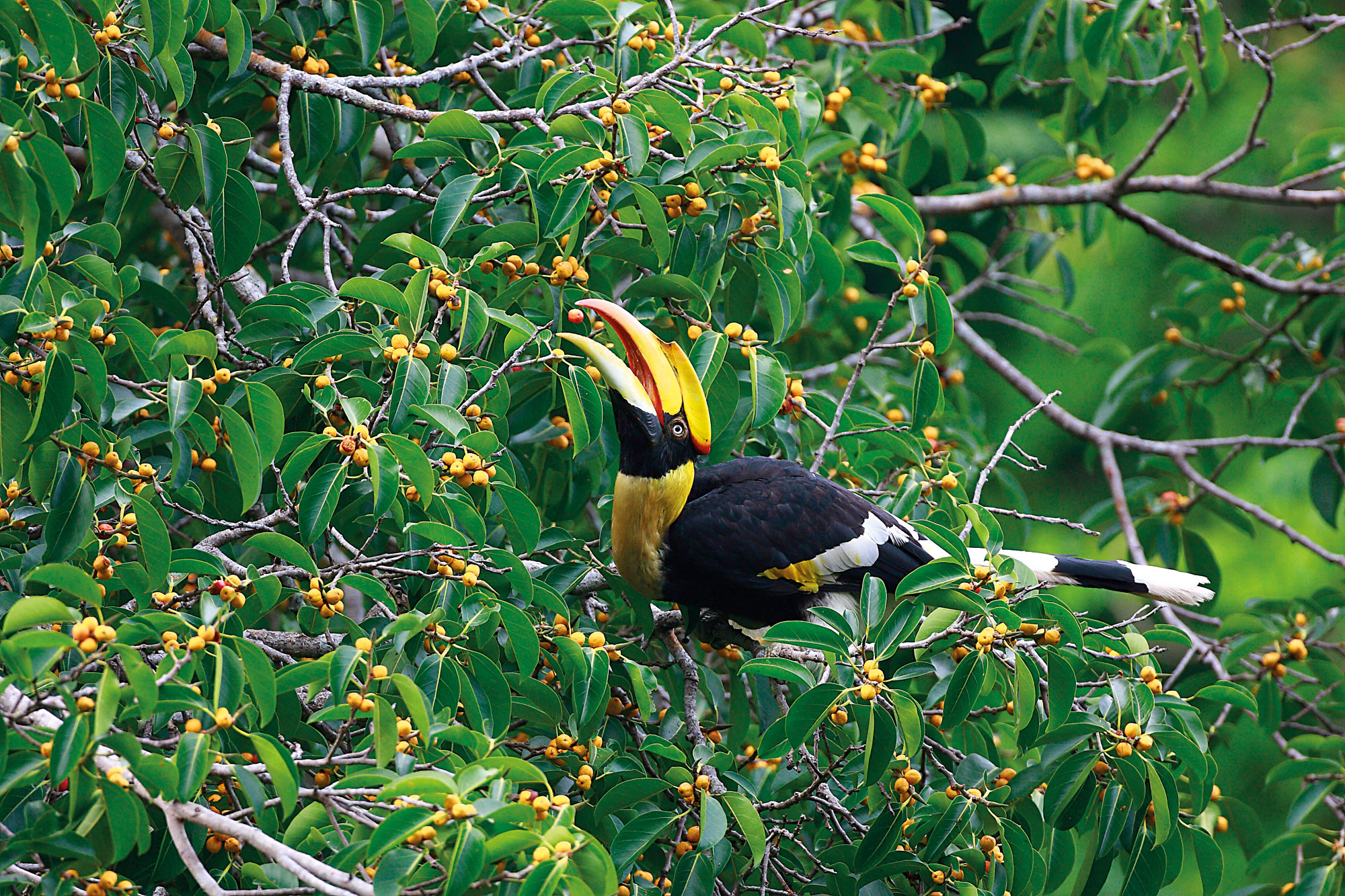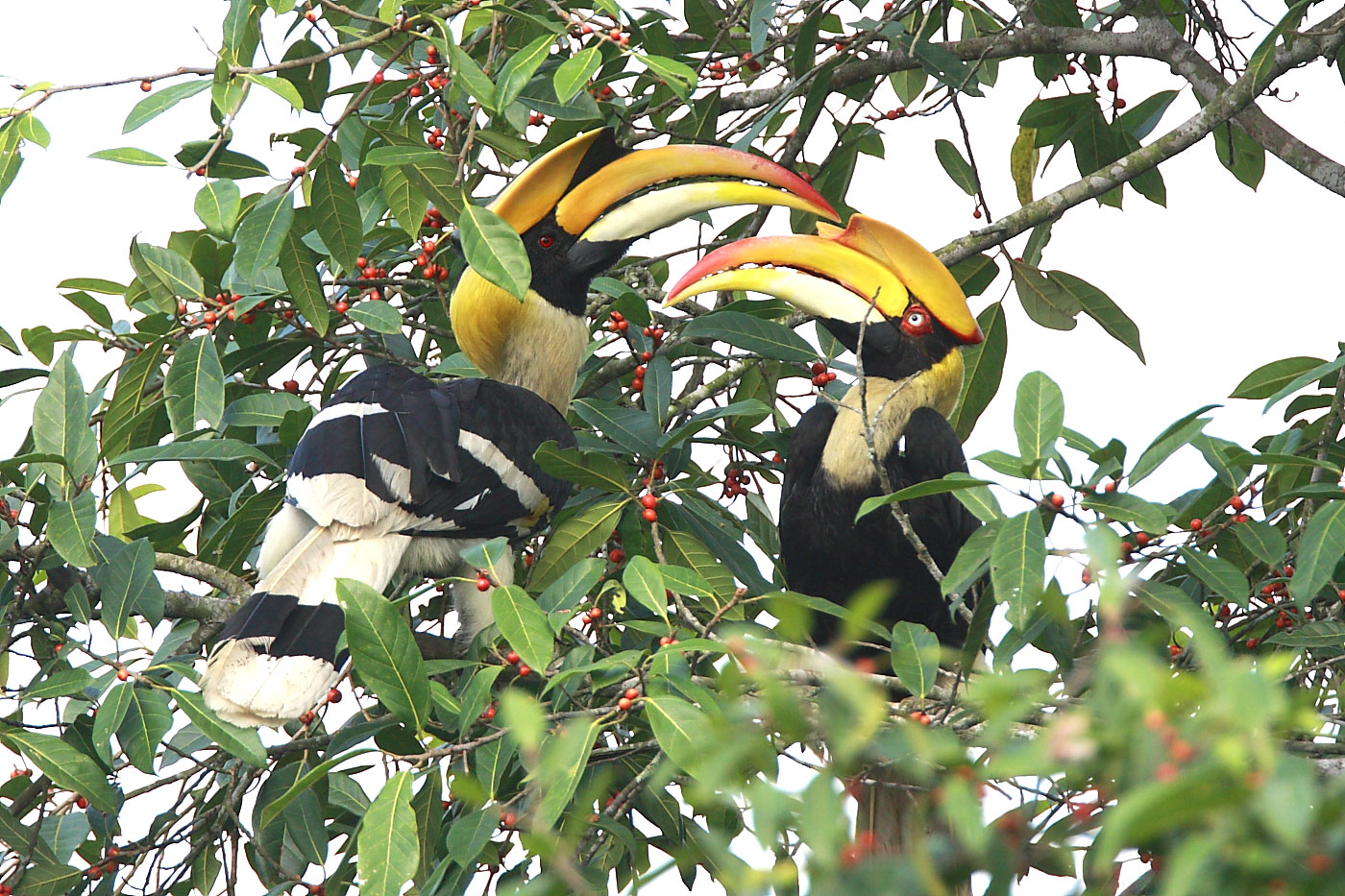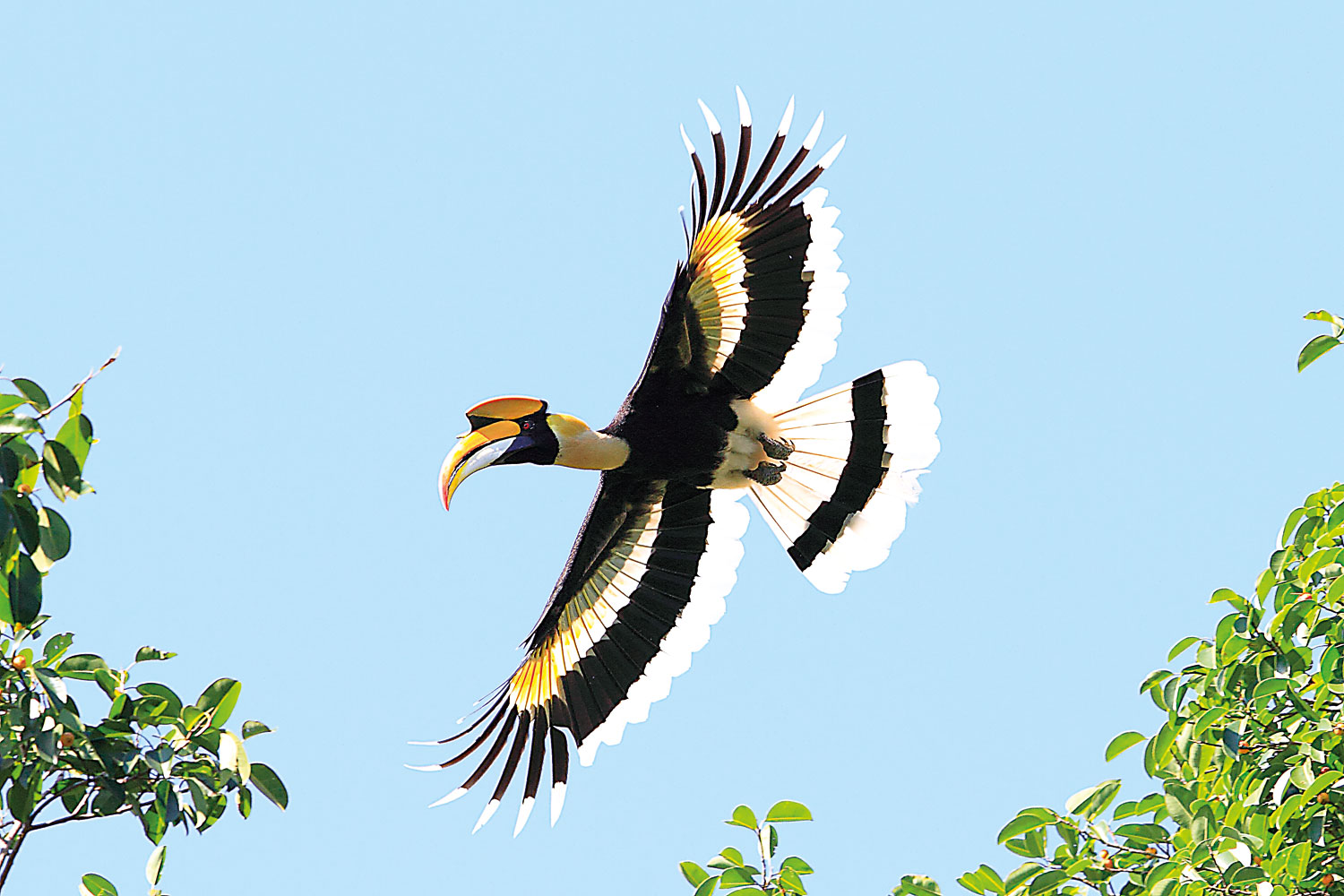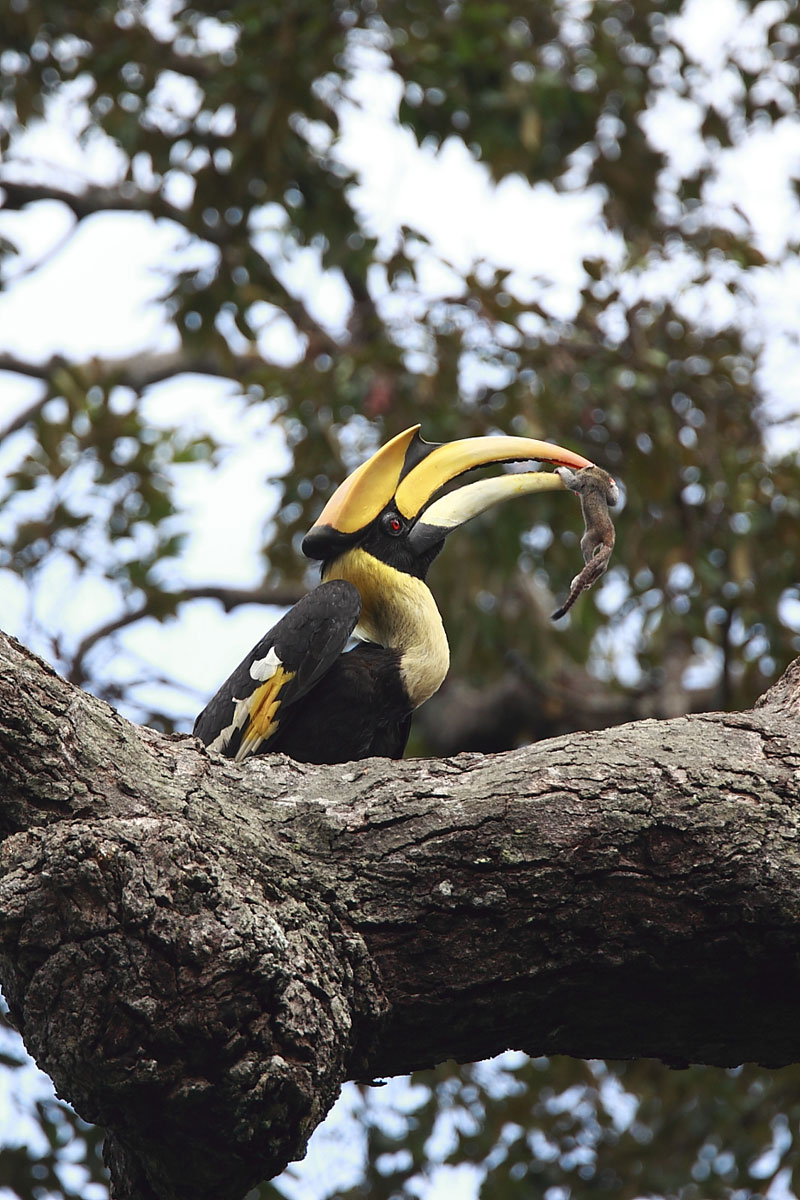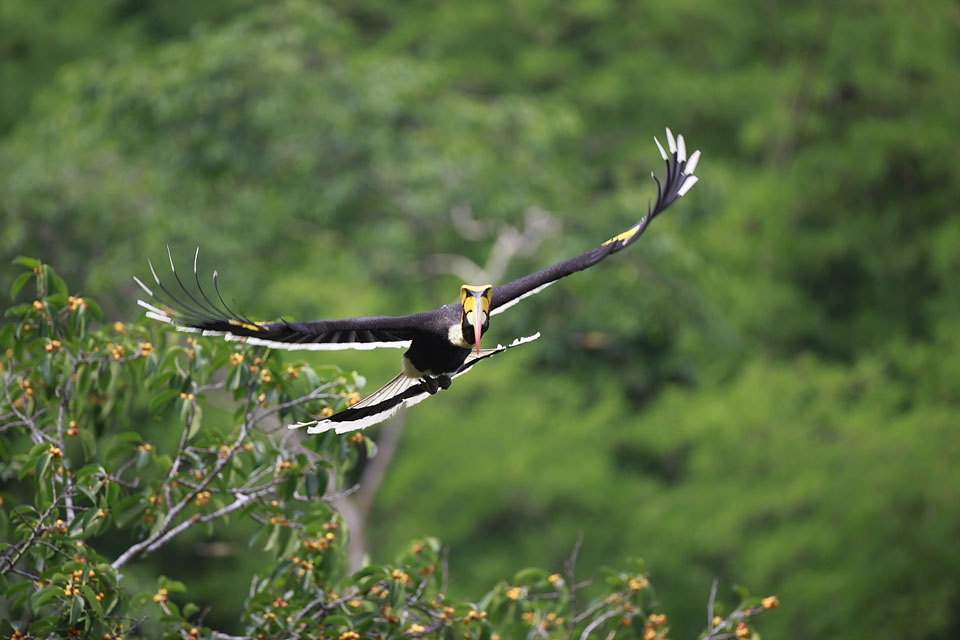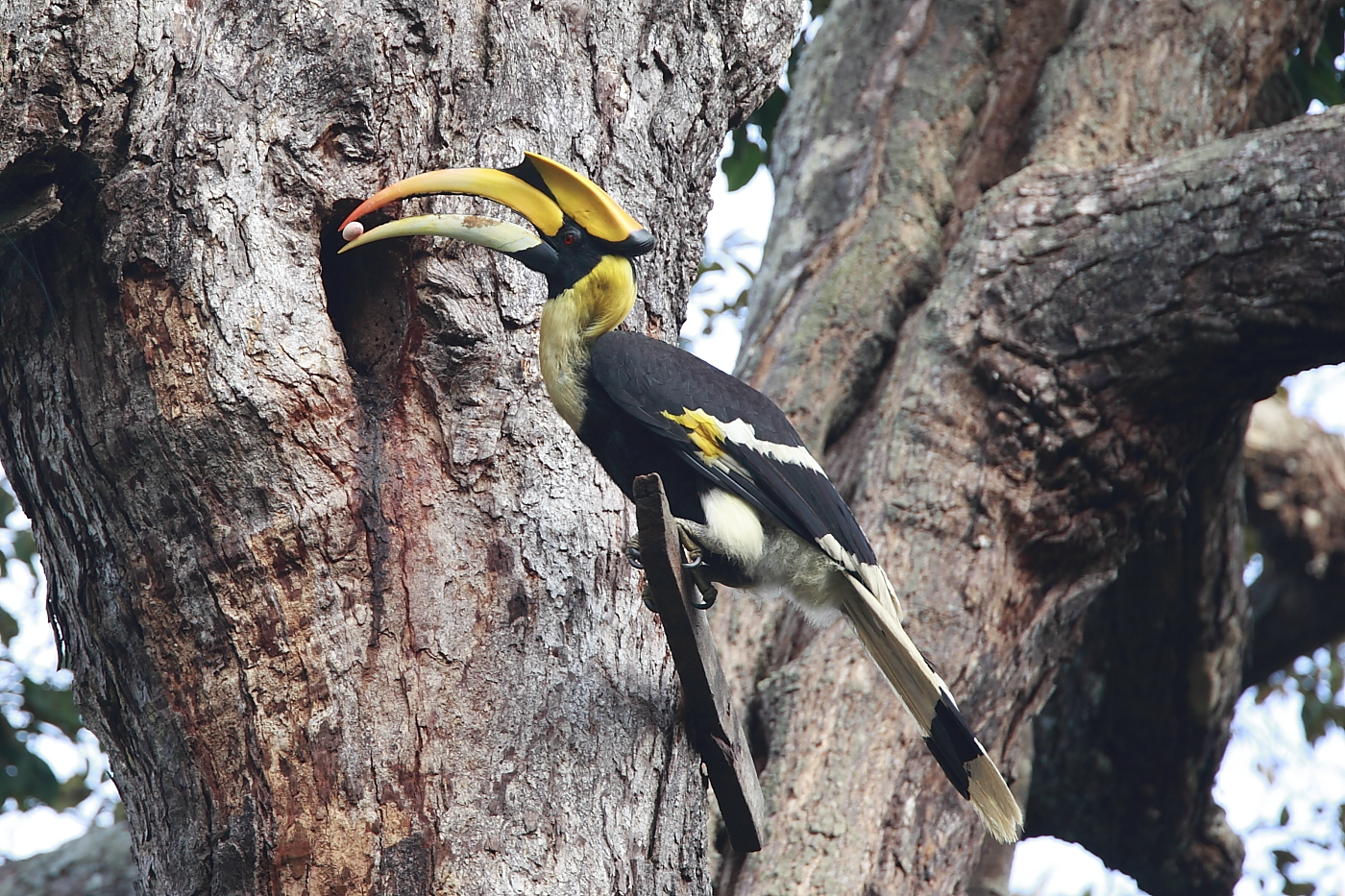Found in primary evergreen and moist deciduous forests. Occurs at sea level, but prefers hills further inland between 600 and 1,000 m elevation, in the Himalayan foothills and northern Thailand recorded to 2,000 m.Feeds in the canopy of large trees, often a resident pair or a family group together. Although largely sedentary, it ranges somewhat for food outside of breeding season. Flocks might congregate in fruiting trees or at communal evening roosts – up to 200 have been reported together on one occasion before 1927.
Occasionally descends to the grounds to pick up fallen fruits. Roams widely in search of fruiting trees, sometimes crossing high over open areas. It flies with heavy wing-beats, 3-4 flaps and a long glide; the massive wings produce a loud whooshing sound.
In Khao Yai NP food eaten and delivered to the nest is mainly fruit, especially many different kinds of figs but also lipid-rich fruits such as those of the Meliaceae ( Aglaia , Dysoxylum , Chisocheton spp) However, Polyalathia viridis (Annonaceae) and Cinnamomum subavenum (Lauraceae) and Horsfieldia glaba (Myristicaceae) appear to be high among non-fig fruit items.
Flowers and buds are also taken, as well as many animals such as small mammals, birds and reptiles,as well as large insects and other arthropods. When hunting, this hornbill hops along the branches and pokes into crevices and bark for prey,grabbing it with its huge bill and tossing it in the air for a better grip, before flying off to deliver it to the nest.
A survey in Khao Yai NP in Thailand found that the diet by weight during breeding was 57% figs, 29% other fruits and 14% animal food with 30.5 g per observation-hour; a later survey in southern Thailand found a 54:41:5 ratio with 47 g per observation-hour brought to the nest.
Generally, in the non-breeding season there are fewer lipid-rich fruits available, and it relies even more on figs.
